Go-To Guide for Decontamination and Remediation Processes
By Editorial Team
Updated on July 25, 2025
Living in and maintaining a healthy environment may require you to undertake home and ground decontamination and remediation procedures.
Whether you’re dealing with mould, asbestos, vermiculite infestation, or hydrocarbon or heavy metals, this article addresses all the related decontamination, removal, abatement, and remediation work necessary, along with associated service fees.
What Is the Purpose of Decontamination & Remediation? Guide and Examples
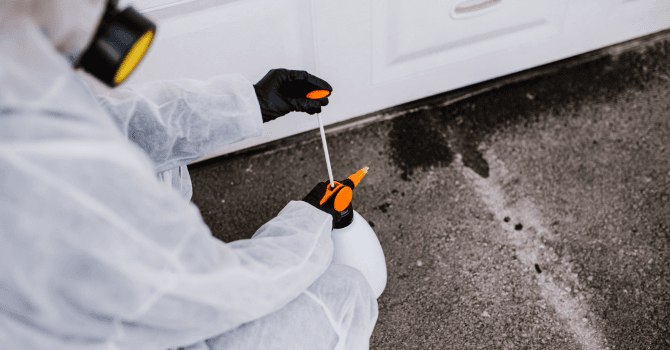
Source: Canva
Decontamination involves either reducing the bacterial count (e.g. E. coli), microorganisms (e.g. mould), or materials (e.g. asbestos) found in/on a specific area or surface and eradicating it completely.
In the majority of cases, remedial procedures consist of reducing the presence of contaminants using chemical disinfectants to achieve an acceptable health safety level.
What Is Decontamination vs Disinfection (Sterilization)?
In layperson’s terms, decontamination procedures eliminate harmful substances, making areas safer, whereas, sterilization eliminates all microorganisms, including bacteria and viruses, rendering everything completely devoid of all living organisms.
Mould Remediation and Removal: What Is the Best Method?
Generally, scrubbing mould-contaminated surfaces with water and soap is sufficient for removal. However, said practice may not be enough depending on the contamination level, therefore making the use of stronger, chemical disinfectants necessary.
To know exactly how to proceed with mould remedial work, you first have to assess your situation-specific contamination level and be sure to sport protective clothing and respiratory protection to prevent the potential for exposure when carrying out decontamination procedures.
What Are the 3 Levels or Steps of Decontamination?
Contamination Level | Level 1 | Level 2 | Level 3 |
|---|---|---|---|
Observation | Isolated mould; under 3 sq. ft. (1 m²) | Isolated mould growth; spanning 3–33 sq. ft. (1–10 m²) | Mould contained in a specific area spanning more than 10 m² |
Example | Ceiling tiles, behind furniture, cardboard boxes lying on the floor | Half a bedroom wall, kitchen floor, a third of the living room ceiling | Sewer backflow, floor-level water ingress, contaminated crawl space |
Intervention | Cleanup done by homeowner / occupant | Assessment and remediation done by builder owner or manager | Assessment and remediation done by a professional service |
Isolated Mould Remediation Tips and Equipment
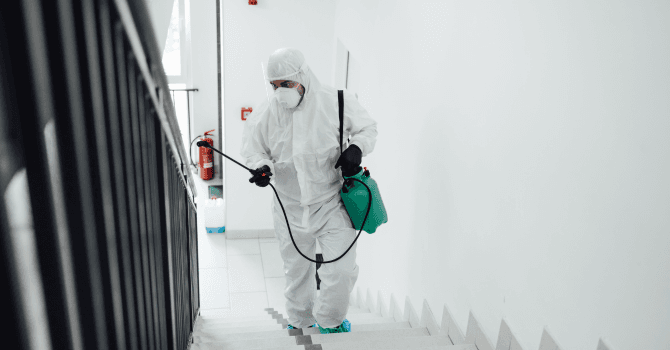
Source: Canva
When dealing with Level 1 mould contamination, you can carry out DIY remedial efforts using chemical disinfectants and appropriate cleaning solutions. To do so, tackle the source of the mould directly:
Cellulose (most especially cardboard boxes and deteriorating furniture)
Dust
Humidity/moisture
Greasy/oily substances
There are two ways to remove mould:
Eliminate the contaminants' breeding ground
Remove all moisture from the environment
Mould problems are always related to said factors. Nonetheless, dealing with humidity-related issues is much simpler than the other. Why? Because mould is a living organism, and based on its type, it’ll feed off of different substances.
Based on type alone, mould feeds on:
Furniture made of cellulose
Food scraps
Sugar
Paper
And more
As a result, the best mould remediation methods are those tackling the root cause of the moisture build-up. As such, you’ll potentially need to carry out the following work:
Plumbing
Insulation
Roofing
Window replacement
Lastly, use the products listed below to kill mould:
Borax
Lemon juice
Baking soda
Thyme essential oil
And, be sure to equip yourself with the following items: gloves, a HEPA vacuum, coveralls, protective eyewear, and a dehumidifier.
Large-Scale Mould Remediation Tips
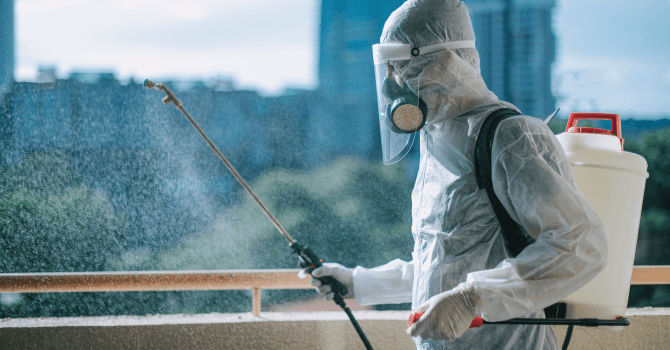
Source: Canva
If you’re experiencing Level 3 mould problems in your home, you have to hire remediation experts. They will be able to carry out the following services:
1- Mould cleaning
The hired service will use fungicide and virucide products to kill mould found around your home. It often involves basement remediation, as in most households, said space is often:
Storage area
Most humid in the house
Rarely cleaned
To prevent mould spores from surviving in your home, all affected items that can’t be restored must be discarded in sealed plastic bags.
2- Odour control
Mould spores have a very distinctive smell, which becomes more pungent over time as the mould spreads throughout the dwelling. Luckily, the hired removal and remediation service provider will treat against unpleasant odours. Using negative air machines with HEPA filters, mould remediation professionals will apply air fresheners and deodorizers on all infested surfaces.
3- How can airborne mould be removed?
Thanks to HEPA filters, professional service providers will be able to rid the air inside your home of mould and spores.
This step is indispensable as mould spreads from one item to the next. Indeed, Penicillium and Aspergillus species are among the most common mould types found in residential buildings, both capable of moving from one breeding ground to the next, infesting your home’s building materials.
As such, removing the mould contained in the air inside your home is imperative to prevent mould reoccurrences in other areas.
Mould Removal and Remediation Cost: Hiring a Technician
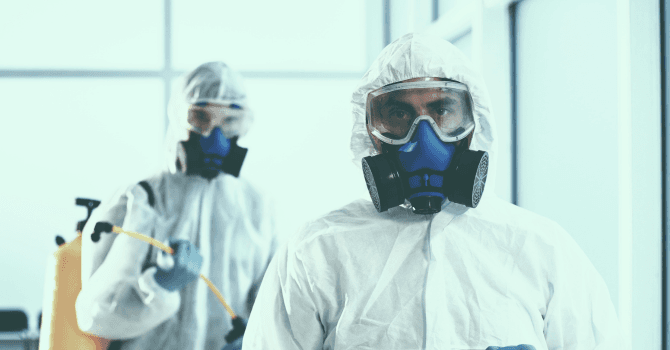
Source: Canva
Mould remediation cost between $600 and $30,000 based on the affected square footage and the contaminated area:
Crawl space: $600–$4,800
Attic with infested air ducts: $2,000–$6,000
Cleaning: $10,000–$30,000
In the event of flooding, a proper cleanup will be imperative to control humidity levels and prevent a mould-growth-favourable environment.
How Is Asbestos Removed?
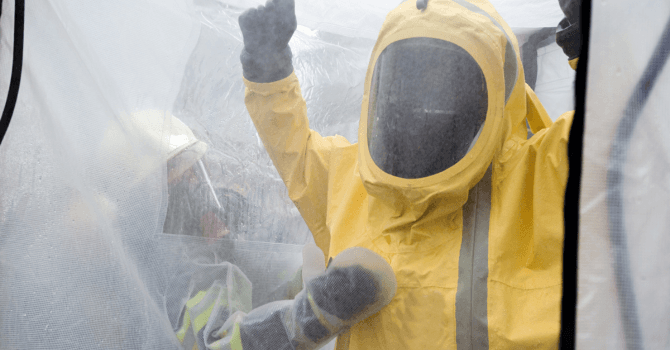
Source: Canva
Asbestos removal should always be done by qualified professionals as there is no minimal threshold for asbestos exposure.
Improperly handling materials contaminated with asbestos can lead to airborne asbestos dust, leaving you and your family members at risk of inhaling contaminated dust and developing respiratory problems like asbestosis.
This natural mineral and carcinogen is so dangerous that removal and abatement service companies are required to have the proper certifications on hand. So much so that trade professionals (in Quebec) must have the following:
Warranty
RBQ licence
Business registration
Trained employees
Dedicated PPE (masks, coveralls, etc.)
How to Remove Asbestos Safely
There are two methods used and reserved by trade professionals to remove asbestos:
Wet removal
Dry removal
The wet removal method is used when the contaminated surfaces are covered in asbestos dust. Damp cloths are then used to trap the dust and are disposed of right after.
Avoid reusing the same rags or cloths or soaking them in the same water bucket as you’ll simply be contaminating the water with asbestos. All rags and cloths should be single-use only. Throw them out after every use.
Dry removal is employed when materials containing asbestos can be removed in patches, rolls, or folds. The asbestos is then trapped and sealed.
When handling the materials, a dedicated vacuum (usually equipped with a HEPA filter) is used to trap all asbestos-contaminated dust.
How Much Does Asbestos Removal Cost?
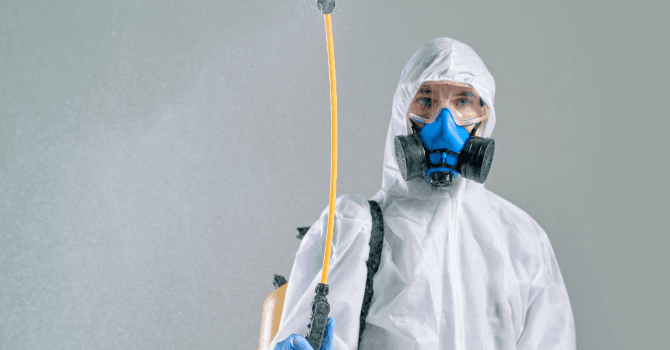
Source: Canva
Asbestos removal and abatement efforts can cost up to $11,000. Here are some of the factors considered in asbestos abatement fees:
Size of house
Quantity of asbestos
Duration of work
Basically, depending on the above-mentioned factors, expect the following price ranges:
$4,000–$5,000 for a one-storey home, under 3,000 sq. ft. of surface space
$1,500 for removal of 10% of asbestos-containing flooring/covering in a two-storey home, 200 sq. ft. surface
$2,750 for removal of 90% of asbestos-containing flooring/covering in a two-storey home, 200 sq. ft. surface
Up to $6,000 in fees for home asbestos removal and abatement services
The detailed fees aren't too bad, considering the amount of work that goes into decontaminating an asbestos-infested home. We sat down with Louis Gareau, Société Québécoise Décontamination Amiante (SQDA), who went on to explain what asbestos abatement efforts entail:
“The duration of asbestos abatement efforts depends on the home’s square footage. [for example, a 5 ½ could take up to 8 days, ed.] Abatement projects can have more than a few constraints [big and cumbersome installations, portable showers, dressing room, relocation, etc. ed.].” (Quote translated by RenoQuotes into English)
Where in a House Are You Likely to Find Asbestos?
Asbestos is often found in Eternit roofing sheets, but also in the composition of exhaust pipes or wastewater lines. It can also be found in residential ceiling and wall insulation. As Gareau mentions, “Oftentimes, asbestos is found in old apartment buildings or houses.” (Quote translated by RenoQuotes into English)
How Long Does Asbestos Stay in the Air?
Note that there are no risks to your health should a specialized service provider perform asbestos abatement efforts in your home, so long as said trade experts use the proper tools and equipment:
Negative air machines with HEPA filters
Specially designed dumping hoppers for asbestos waste
Sealants to trap asbestos
Thorough post-work cleanup
Issue a post-air analysis certificate
This is why, as Gareau says, “Clients located near a decontamination zone aren’t required to wear personal protective equipment.” (Quote translated by RenoQuotes into English)
Everything About Soil Decontamination Measures
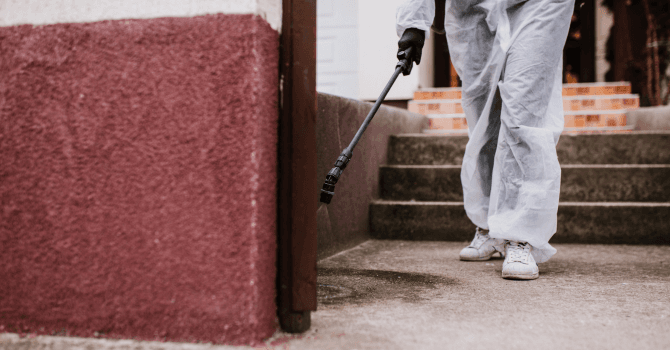
Source: Canva
Soil can be contaminated in two ways:
Liquid contamination (spills)
Solid contamination (landfill waste)
Soils must be decontaminated as quickly as possible, following the accidental spill of a hazardous substance. The sooner remediation begins, the less time there is for the spilled substance to spread and reach groundwater.
As for landfill waste, containers often leak over time or are perforated during well-drilling processes.
How to Decontaminate Soil
To remove all soil-level contaminants, you must:
Physically remove the existing soil
Treat the infested areas
Treat it on-site
Once the soil is decontaminated, the area in question can be backfilled. However, should the contaminated area be too big, handling the soil may be considered a safety hazard for the environment.
Consequently, the soil won’t be dug out, a safety perimeter will be established, and the area will be monitored.
How Much Does Soil Decontamination Services Cost?
Prices range from $35–$55 per ton for hydrocarbon-contaminated soil and include its removal and transportation to a soil treatment centre.
Heavy metal remediation costs over $200, and includes removing the contaminated soil and transporting it to a specialized centre.
However, before deciding on land decontamination, one has to be sure the soil in question is contaminated. Said phase is called land characterization, which costs $1,000–$5,000.
Typically, in Quebec, when you put your house up on the market, you're required to have your property assessed by the Ordre des évaluateurs agréés du Québec, which may raise environmental risks, such as sharing a property line with a gas station, for example.
Vermiculite Remediation Cost and Methods
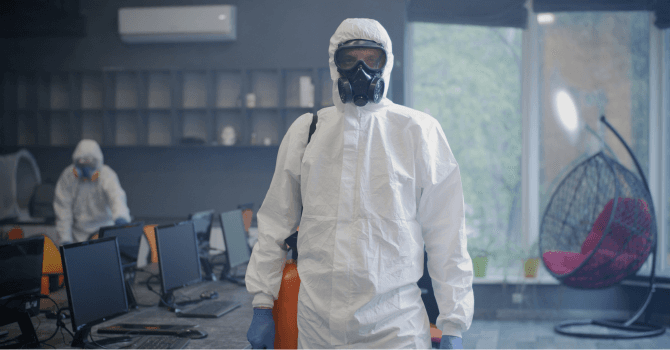
Source: Canva
Vermiculite is a type of rock widely used to insulate houses. Depending on the mine from which it was extracted, its main drawback lies primarily in its potential asbestos content. This prompted Canada to ban all sales of said vermiculite in 1999.
The only hitch: many Quebec homes still contain asbestos-contaminated vermiculite from the Libby Asbestos site in Lincoln County, Montana. For decades, vermiculite has been sold under the trade name Zonolite.
Residential vermiculite decontamination methods are the same as those used for asbestos. So, you need to hire a company with the necessary asbestos handling certifications.
When handling asbestos-containing vermiculite, there's a high risk of airborne fibres. In such cases, there's a risk of inhalation along with the development of an asbestos-related disease.
How Much Does Vermiculite Remediation Cost?
$500 to determine if the vermiculite is asbestos-contaminated
Between $2,500–$6,000 for subfloor remediation
Between $3,000–$7,500 for wall remediation
Between $5,000–$10,000 for attic remediation
Between $5,000–$10,000 for demolition
$500 for air quality certification
What Other Useful Information Should Homeowners Know About?
Whether it's asbestos, vermiculite, or mould, removal and remediation are an important part of restoring a healthy environment for you and your children at home.
However, remember that while you can handle mould remediation yourself, never do so for vermiculite or asbestos.
Vermiculite and asbestos decontamination should be left exclusively to certified service providers. Only skilled and qualified personnel, trained in asbestos risk management methods and equipped with the necessary materials, can work on your property.
It doesn't matter where the asbestos and vermiculite are, whether it's in the basement or under your roof. If you decide to tackle the problem yourself, you're putting your health—and that of your loved ones—at risk.
FAQ
What is the difference between decontamination and disinfection?
Decontamination refers to the process of removing or neutralizing harmful substances such as chemicals, mould, asbestos, or biological contaminants from an area to reduce health risks. Disinfection, on the other hand, is a specific type of decontamination that targets and eliminates microorganisms—like bacteria and viruses—using chemical agents. While decontamination may include disinfection, it also involves physical removal or containment of hazardous materials.
When should decontamination be considered?
Decontamination should be considered any time harmful substances—such as mould, asbestos, vermiculite, hydrocarbons, or heavy metals—are present in your home or on your property. This is particularly crucial after flooding, renovations in older buildings, or if your home is located near potential contamination sources like gas stations or industrial sites. Early detection and professional intervention help prevent serious health risks and structural damage.
Why is decontamination important?
Decontamination is essential for maintaining a safe and healthy living environment. It helps eliminate substances that could cause respiratory problems, allergies, or long-term health issues, such as cancer or asbestosis. By removing or neutralizing these hazards, decontamination protects both the occupants and the integrity of the home, especially in the case of toxic substances like asbestos or mould that can spread quickly if left untreated.
Looking for something else?
Related articles
The latest industry news, interviews, technologies, and resources.

Équipe éditoriale
•02 May 2025
For any homeowner, a contaminated property is a literal nightmare. What should you do if your home is infested with asbestos, radon, or mould? Such problems, which affect hundreds of thousands of homes across Canada, can severely hinder a home’s structural integrity, not to mention the health of its dwellers.
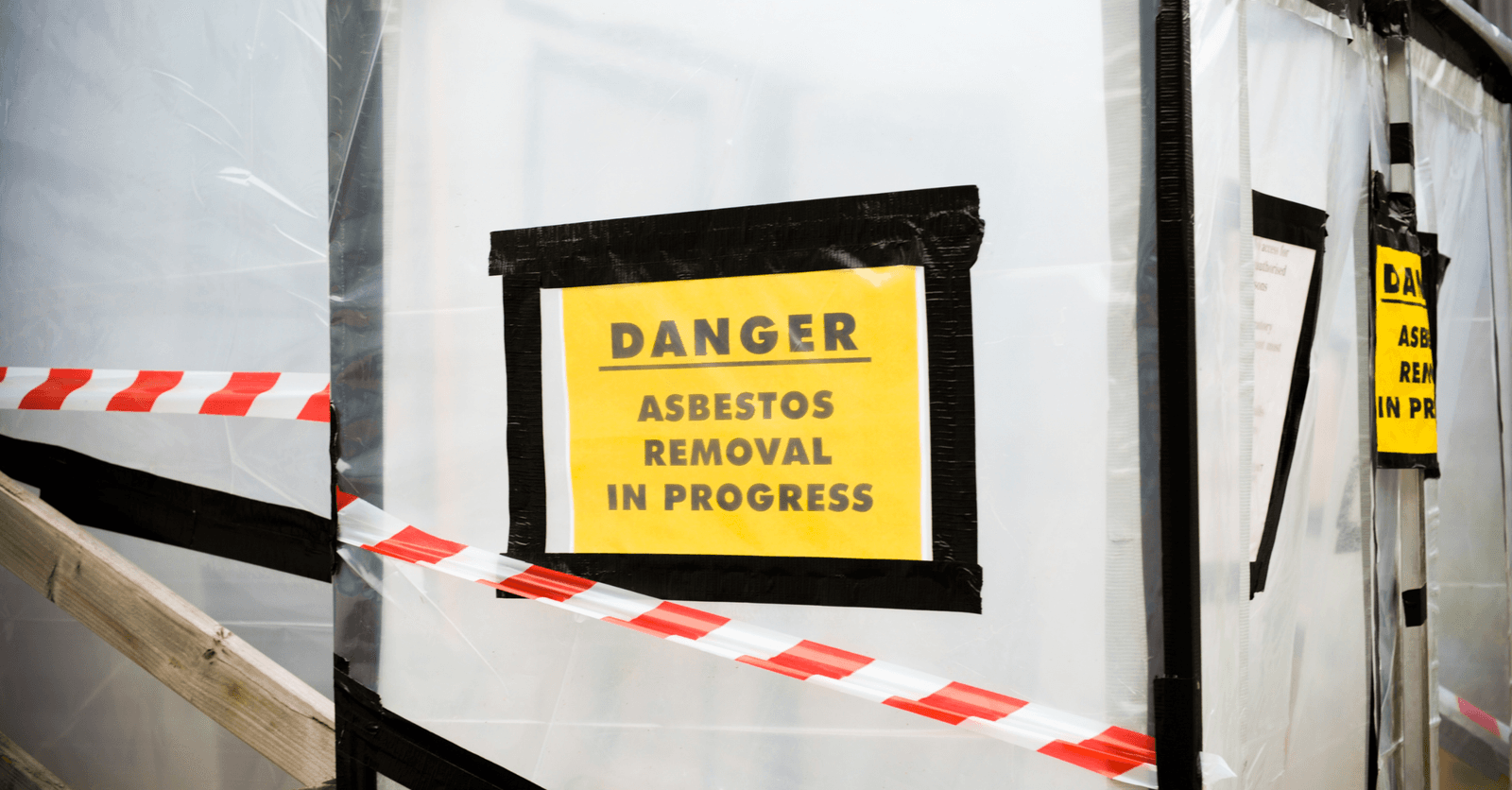
Editorial Team
•15 Dec 2025
Ever wondered if there's asbestos in your home? Asbestos is a mineral fibre found and used worldwide from the late 1800s to the early 1990s. It was commonly used in building materials and insulation, since it doesn't catch fire easily, making it the perfect fire prevention material.

Karine Dutemple
•07 Nov 2023
When large-scale renovation projects are happening, you may lose full access to the most important sections of your home, such as the kitchen or bathroom. In the case of a bathroom renovation, depending on the work that is being carried out and the agreement you have signed with the contractor, the timespan of the project can vary and sometimes last several weeks, thus creating a certain period of inconvenience for you or your family, especially if you have young children.
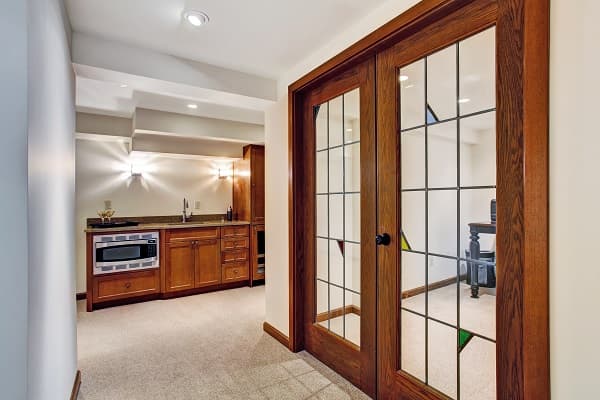
Editorial Team
•17 Dec 2024
If you’re looking to let a little bit of light in between two otherwise dull or dingy rooms, or you’re looking for an alternative to the classic sliding door, then you might be in the market for French doors. These doors can be a beautiful addition to both classic and modern home décors.
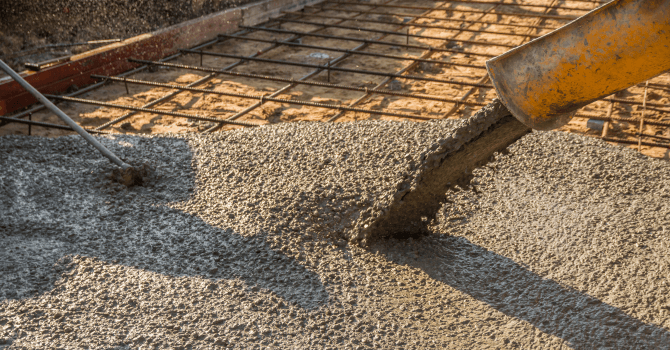
Cynthia Pigeon
•07 Nov 2023
Whether for interior or exterior work, knowing how to pour a concrete slab is vital for anyone wanting to carry out major home renovations. This process can be a bit tricky, especially since you have to follow certain steps to a T, otherwise, the slab could crack prematurely.